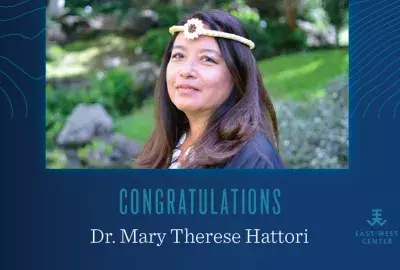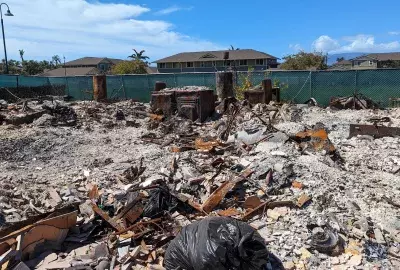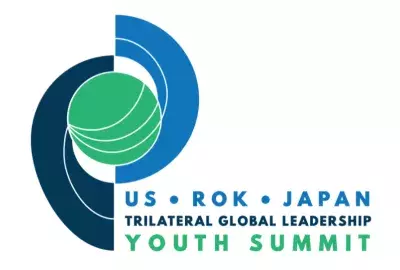Error message

OFFICE/DEPARTMENT
Officials and journalists reflect on the state of US influence in the region at the 2022 EWC International Media Conference
HONOLULU (June 30, 2022)—Is US influence in Asia and the Pacific waning, as the war in Ukraine draws American focus and China moves ever more aggressively to expand its footprint in the region? That was the subtext on the final day of the 2022 East-West Center International Media Conference in Honolulu, as the discussion turned to geopolitics in Asia and the Pacific.
Although the morning’s headline speaker, National Security Council Indo-Pacific policy chief Kurt Campbell, had to pull out of his scheduled virtual address on short notice, other speakers from the State Department and military zeroed in on the issue in their remarks to the several hundred journalists and EWC alumni in attendance in-person and online.
‘Dangerous environment’
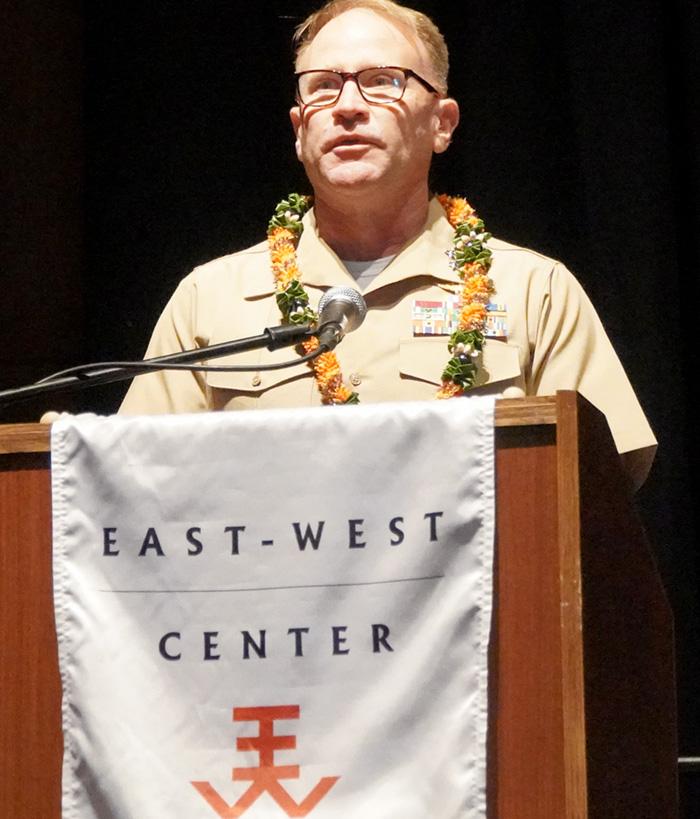
“I believe the current security environment is pretty dangerous,” assessed Marine Corps Maj. Gen. Chris McPhillips, director of strategic planning and policy at the US Indo-Pacific Command’s headquarters in Hawai‘i. “…We are witnessing the largest and fastest military buildup by [China] since World War II, and they continue to upend rules and norms, not only in the Indo-Pacific, but around the world.” Meanwhile, he said, North Korea continues to launch missiles “that destabilize the region.”
In terms of US response, McPhillips emphasized US Secretary of Defense Lloyd Austin’s doctrine of “integrated deterrence,” which he said focuses on coordinating military activity across the physical and cyber domains, while “ensuring that military efforts complement and support diplomatic and economic initiatives, all synchronized with our allies and partners.”
Information ‘long game’
Acting US Under Secretary of State for Public Diplomacy and Public Affairs Elizabeth Allen focused on US efforts to combat false narratives in the “information space,” emphasizing that “when it comes to disinformation, we have to play the long game. Combatting disinformation is not just a rapid response exercise, it is a long-term structural challenge. We need to invest in people’s media and digital literacy, and making sure we enabling credible voices in communities.”
Allen said the US is “surging resources” into supporting press freedom, human rights, anticorruption efforts and civil society institutions in Asia and the Pacific, including added funding for engagement initiatives in the Pacific Islands, where China has long been cultivating economic and media inroads.
US public opinion gap
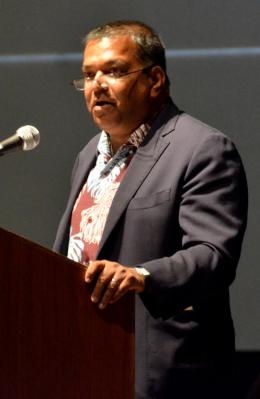
East-West Center Vice President Satu Limaye offered some context drawn from new editions of the Center’s Asia Matters for America series, which maps connections between the United States and Indo-Pacific countries at the national, state, and local levels. Limaye pointed to a new opinion poll report in the series revealing significant gaps between the American general public and state officials, business leaders and other policy “elites” on matters related to Asia and the Pacific, including:
- While only 18 percent of everyday Americans believe that Asian economies matter “a lot” to their states, 43 percent of the policy of elites do.
- 30 percent of the elites believe that the US should increase troops in the region, but only 18 percent of the general public agrees.
- Only one in four everyday Americans believe trade with China and other countries in Asia to be “extremely or very beneficial” to their state, while almost half of the elites do.
- There is one area of broad agreement: roughly two-thirds of both groups say they fear losing trade competitiveness to China.
While close to 4 million American jobs depend on economic activity with Asia, Limaye said, the general public nonetheless “does not regard benefits of trade to be especially useful to domestic job creation.” One in 10 everyday Americans believe that trade with China and rest of the region is a significant sources of job creation. Meanwhile, half of state officials and business leaders think so.
Limaye, who directs the East-West Center’s office in Washington, DC, said that the results of the poll show “that there is a significant amount of work to do to engage Americans with our Indo-Pacific counterparts to explain why this vital relationship is the future, and why they have a stake in it.”
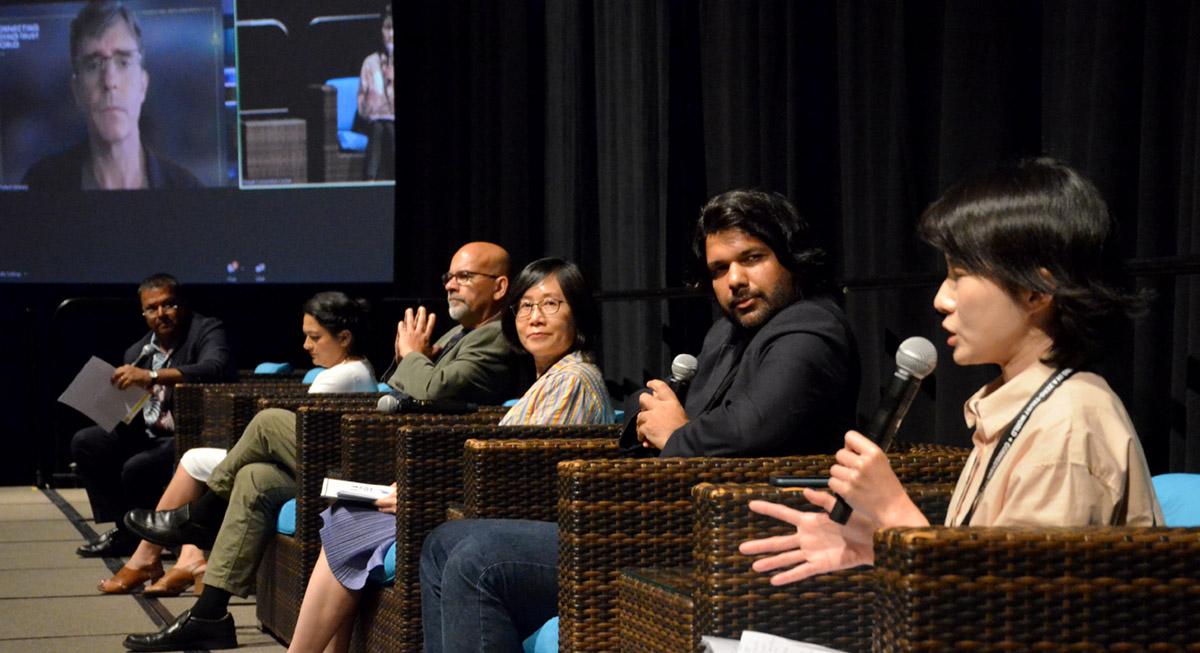
Views from abroad
The morning concluded with a panel of foreign journalists discussing their perspectives on America’s current role in the region. “I appreciate the fact that the US still is the leader of the free world,” said Arfa Khanum Sherwani, senior editor of The Wire in New Delhi, India. “But I think in the past few years, what we are realizing is that there's a grave doubt about its sustainability and reliability.”
When it comes to her country in particular, she said, “What we are witnessing is almost an existential threat to India's democracy and free speech. … I do understand India as a very important ally of the US, I understand the need for a united front against a very assertive China in the region, and India as a big market for the US, but the need of the hour right now is to also make human rights, religious freedom and press freedom part of the strategic dialogue.”
Nirmal Ghosh, US bureau chief for Singapore’s The Straits Times, said that at a recent regional dialogue, while the US and China sparred over Taiwan and other matters, “I chose to see a silver lining. Both sides said, yes, we need to keep talking. I think in order to avoid another Ukraine, a kinetic clash somewhere by accident or design, it is absolutely critical that engagement and diplomacy is enhanced, even between competitors.” Also vital he said, is “giving agency to middle powers and smaller countries.”
Ann Hsieh from Taiwan’s The Storm Media made a pitch for Taiwan to be included in the new Indo-Pacific Economic Framework for Prosperity initiative, or IPEF, that underpins the Biden administration’s economic outreach efforts in the region. Citing pandemic supply-chain disruptions, Hsieh said: “I think if Taiwan can join the Indo-Pacific Economic Framework, it would be helpful for the sustainability of the computer chip supply chain.”
Referring back to Allen’s remarks on the US supporting free expression and democratic institutions around the globe, Khuldune Shahid from The Diplomat in Lahore, Pakistan, noted that “despite tens of billions of dollars invested in Pakistan over the past decades, those institutions—whether open internet, freedom of journalism, human rights—are nonexistent, unfortunately.” While Pakistan’s leaders bear primary responsibility for this, he said, “I do tend to question if there is genuine commitment in the West, as well, to strengthening those institutions.”
Jungmin Lee, Washington, DC correspondent for the Korean Broadcasting System, said that while South Korea remains a strong US ally, it also relies heavily on its economic relationship with China. “So we have our own situation, and America should understand it more,” she said. “Sometimes I feel when the US makes foreign policy, it just sees Asia as one region and is not really focused on each country's situation.”
Robert Delaney, North America bureau chief for Hong Kong’s South China Morning Post, said the Biden administration has actually made more headway than he had expected in garnering buy-in for the Indo-Pacific Economic Framework. “I think many of us were gearing up to see very little response at all in terms of uptake for IPEF, but in the end the administration managed to pull off bringing more than a dozen countries together,” he said. “To me, those developments suggest that despite the misgivings that a lot of countries in Asia have with the US government for certainly being very transactional, and in some cases fairweather, I think at the end of the day they understand the importance of the US presence and influence in the Indo-Pacific.”
Officials and journalists reflect on the state of US influence in the region at the 2022 EWC International Media Conference
HONOLULU (June 30, 2022)—Is US influence in Asia and the Pacific waning, as the war in Ukraine draws American focus and China moves ever more aggressively to expand its footprint in the region? That was the subtext on the final day of the 2022 East-West Center International Media Conference in Honolulu, as the discussion turned to geopolitics in Asia and the Pacific.
Although the morning’s headline speaker, National Security Council Indo-Pacific policy chief Kurt Campbell, had to pull out of his scheduled virtual address on short notice, other speakers from the State Department and military zeroed in on the issue in their remarks to the several hundred journalists and EWC alumni in attendance in-person and online.
‘Dangerous environment’

“I believe the current security environment is pretty dangerous,” assessed Marine Corps Maj. Gen. Chris McPhillips, director of strategic planning and policy at the US Indo-Pacific Command’s headquarters in Hawai‘i. “…We are witnessing the largest and fastest military buildup by [China] since World War II, and they continue to upend rules and norms, not only in the Indo-Pacific, but around the world.” Meanwhile, he said, North Korea continues to launch missiles “that destabilize the region.”
In terms of US response, McPhillips emphasized US Secretary of Defense Lloyd Austin’s doctrine of “integrated deterrence,” which he said focuses on coordinating military activity across the physical and cyber domains, while “ensuring that military efforts complement and support diplomatic and economic initiatives, all synchronized with our allies and partners.”
Information ‘long game’
Acting US Under Secretary of State for Public Diplomacy and Public Affairs Elizabeth Allen focused on US efforts to combat false narratives in the “information space,” emphasizing that “when it comes to disinformation, we have to play the long game. Combatting disinformation is not just a rapid response exercise, it is a long-term structural challenge. We need to invest in people’s media and digital literacy, and making sure we enabling credible voices in communities.”
Allen said the US is “surging resources” into supporting press freedom, human rights, anticorruption efforts and civil society institutions in Asia and the Pacific, including added funding for engagement initiatives in the Pacific Islands, where China has long been cultivating economic and media inroads.
US public opinion gap

East-West Center Vice President Satu Limaye offered some context drawn from new editions of the Center’s Asia Matters for America series, which maps connections between the United States and Indo-Pacific countries at the national, state, and local levels. Limaye pointed to a new opinion poll report in the series revealing significant gaps between the American general public and state officials, business leaders and other policy “elites” on matters related to Asia and the Pacific, including:
- While only 18 percent of everyday Americans believe that Asian economies matter “a lot” to their states, 43 percent of the policy of elites do.
- 30 percent of the elites believe that the US should increase troops in the region, but only 18 percent of the general public agrees.
- Only one in four everyday Americans believe trade with China and other countries in Asia to be “extremely or very beneficial” to their state, while almost half of the elites do.
- There is one area of broad agreement: roughly two-thirds of both groups say they fear losing trade competitiveness to China.
While close to 4 million American jobs depend on economic activity with Asia, Limaye said, the general public nonetheless “does not regard benefits of trade to be especially useful to domestic job creation.” One in 10 everyday Americans believe that trade with China and rest of the region is a significant sources of job creation. Meanwhile, half of state officials and business leaders think so.
Limaye, who directs the East-West Center’s office in Washington, DC, said that the results of the poll show “that there is a significant amount of work to do to engage Americans with our Indo-Pacific counterparts to explain why this vital relationship is the future, and why they have a stake in it.”

Views from abroad
The morning concluded with a panel of foreign journalists discussing their perspectives on America’s current role in the region. “I appreciate the fact that the US still is the leader of the free world,” said Arfa Khanum Sherwani, senior editor of The Wire in New Delhi, India. “But I think in the past few years, what we are realizing is that there's a grave doubt about its sustainability and reliability.”
When it comes to her country in particular, she said, “What we are witnessing is almost an existential threat to India's democracy and free speech. … I do understand India as a very important ally of the US, I understand the need for a united front against a very assertive China in the region, and India as a big market for the US, but the need of the hour right now is to also make human rights, religious freedom and press freedom part of the strategic dialogue.”
Nirmal Ghosh, US bureau chief for Singapore’s The Straits Times, said that at a recent regional dialogue, while the US and China sparred over Taiwan and other matters, “I chose to see a silver lining. Both sides said, yes, we need to keep talking. I think in order to avoid another Ukraine, a kinetic clash somewhere by accident or design, it is absolutely critical that engagement and diplomacy is enhanced, even between competitors.” Also vital he said, is “giving agency to middle powers and smaller countries.”
Ann Hsieh from Taiwan’s The Storm Media made a pitch for Taiwan to be included in the new Indo-Pacific Economic Framework for Prosperity initiative, or IPEF, that underpins the Biden administration’s economic outreach efforts in the region. Citing pandemic supply-chain disruptions, Hsieh said: “I think if Taiwan can join the Indo-Pacific Economic Framework, it would be helpful for the sustainability of the computer chip supply chain.”
Referring back to Allen’s remarks on the US supporting free expression and democratic institutions around the globe, Khuldune Shahid from The Diplomat in Lahore, Pakistan, noted that “despite tens of billions of dollars invested in Pakistan over the past decades, those institutions—whether open internet, freedom of journalism, human rights—are nonexistent, unfortunately.” While Pakistan’s leaders bear primary responsibility for this, he said, “I do tend to question if there is genuine commitment in the West, as well, to strengthening those institutions.”
Jungmin Lee, Washington, DC correspondent for the Korean Broadcasting System, said that while South Korea remains a strong US ally, it also relies heavily on its economic relationship with China. “So we have our own situation, and America should understand it more,” she said. “Sometimes I feel when the US makes foreign policy, it just sees Asia as one region and is not really focused on each country's situation.”
Robert Delaney, North America bureau chief for Hong Kong’s South China Morning Post, said the Biden administration has actually made more headway than he had expected in garnering buy-in for the Indo-Pacific Economic Framework. “I think many of us were gearing up to see very little response at all in terms of uptake for IPEF, but in the end the administration managed to pull off bringing more than a dozen countries together,” he said. “To me, those developments suggest that despite the misgivings that a lot of countries in Asia have with the US government for certainly being very transactional, and in some cases fairweather, I think at the end of the day they understand the importance of the US presence and influence in the Indo-Pacific.”





